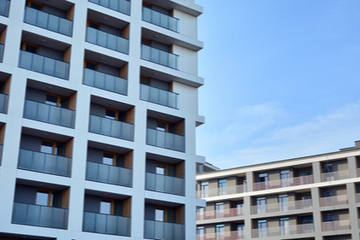New lists of vulnerable neighbourhoods – still need for action
Today, the Danish Ministry of Social Affairs, Housing and Senior Citizens published the lists of vulnerable neighbourhoods, parallel societies, transformation areas and focus areas.
Having dropped for several years, the number of vulnerable neighbourhoods on the list increased in 2023, and during the last year the number of vulnerable neighbourhoods has increased to 19 from 17. The new residential areas on the list were categorised as focus areas in 2022, including Vejleåparken in Ishøj and Motalavej in Slagelse.
Likewise, the number of parallel societies is up to 12 on this year's list from 10 in 2022. This year there are eight transformation areas, down from nine transformation areas in 2022, and the plans for transformation of the residential areas are still being realised.
Finally, the number of focus areas is down from 67 in 2022 to 56 in 2023.
Developments show that it is still necessary for local authorities and housing organisations to launch physical and social housing initiatives in support of the aim to change the social mix of residents over time in the areas that are subject to special focus.
An amendment to the Social Housing Act in 2010 introduced the first criteria defining vulnerable neighbourhoods (previously, the so-called "Ghetto List"). At the time, a vulnerable neighbourhood (previously, a "ghetto") was identified on the basis of three criteria: i) number of immigrants and their descendants from non-Western countries, ii) number of residents not active on the Danish labour market and iii) number of residents sentenced for violation of the Danish Penal Code, the Danish Offensive Weapons Act or the Danish Act on euphoriant substances.
The criteria have been expanded since 2010, and the current criteria for vulnerable neighbourhoods were introduced in the Danish Social Housing Act in 2018 as a consequence of the "Parallel Society Package" passed by a broad majority in the Danish Parliament.
The parallel society legislation has had far-reaching consequences for several social housing organisations and the residents of the vulnerable neighbourhoods. This applies in particular to the residential areas meeting the criteria for being transformation areas (previously, "hard ghettos"). The designation as a transformation area implies an obligation for the housing organisation and the local authority to reduce the number of social housing in the residential area to 40%, for example by demolishing housing, re-classification, sale of units or densification with other housing and ownership types.
The main idea behind a reduction of the share of social housing in the residential areas currently comprised by a development plan is densification with new buildings.
**The full version of the article is not available in English.
Please contact us at insights@plesner.com if you would like a translation into English of the article.**
Do you want to know more?
Our Social Housing team are specialised in social housing legislation, and we have broad experience with development of transformation areas, sale of social housing, creation of boundaries and densification.
We have thorough knowledge of the legislation relating to the social housing sector and in the daily operation of social housing organisations, and we advise social housing organisations and private actors on developing and investing in the social housing sector.


